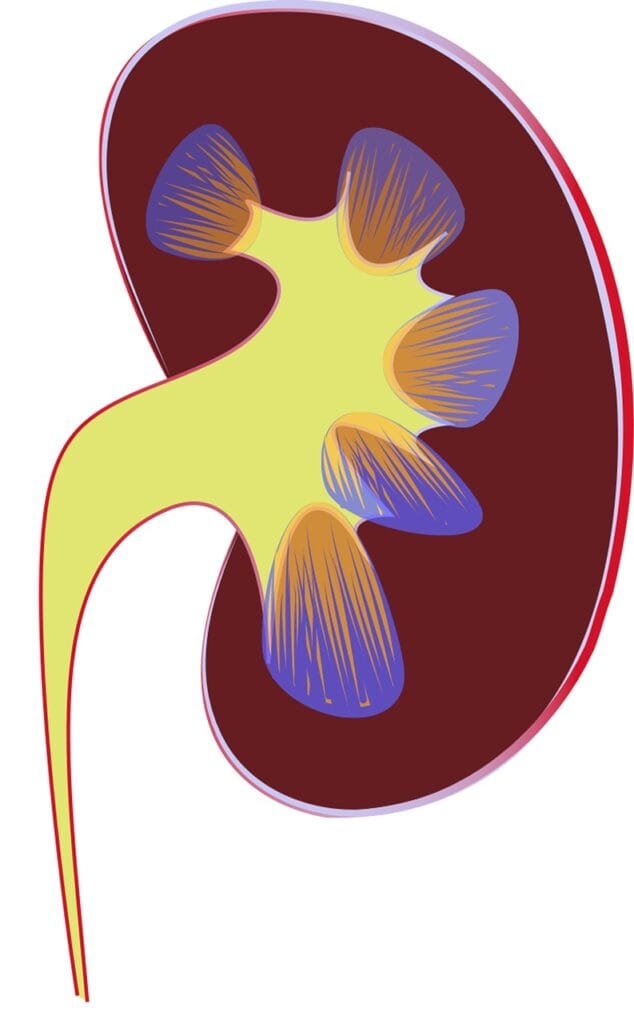Table of Contents
Introduction

Procedure of kidney transplant is a lifesaving procedure that includes replacing a nonfunctional kidney with a healthy kidney from a donor. This is often applicable to patients who experience end-stage kidney disease (ESKD) or those with severe kidney dysfunction. Below, we discuss some aspects of kidney transplants, such as requirements for the transplant, the benefits and disadvantages of a kidney transplant, the success rate, what happens to the old kidney, and how long one is expected to live after a kidney transplant.
Kidney transplant qualifications
Patients applying for a kidney transplant must meet certain medical and lifestyle criteria for the procedure. These include the following:
Eligibility Evaluation: Patients must have an assessment that determines whether or not they are medically fit for the surgery. This primarily involves physical examinations and also includes blood tests and other imaging studies.
The process of matching: A transplant involves a kidney from a compatible donor. Compatibility is blood type, tissue type, or HLA typing, and crossmatch tests to assure the least possible risks of rejection.
Common conditions that would make patients unsuitable for transplantation: Such conditions include active infections, untreated cancers, and severe heart diseases, among others.
Factors in Lifestyle Attitude towards a healthy lifestyle, not smoking, and avoidance of excessive alcohol consumption are important. Non-adherence to medical recommendations could mean the exclusion of patients.
What happens to the old kidney?
The biggest misconception with regard to the transplant is that the old diseased kidney is removed. Normally, the diseased kidneys are not removed if they are not causing complications such as infection, high blood pressure, or severe pain. Instead, the new kidney is placed in the lower abdomen and attached to the blood vessels and the bladder to enable it to carry out its functions.
Leaving the old kidney intact will minimize the risks and complications of surgery since its removal calls for a more extensive procedure. This is especially true in patients with chronic kidney diseases, like polycystic kidney disease.
Advantages of Kidney Transplant

Kidney transplants can be lifesaving, but that does not mean they do not harbor risks and potential drawbacks. Some of these disadvantages include:
Surgical Risks: The risk of hemorrhage, infections, and any complications related to anesthesia are always present with major surgery.
Rejection: The body may reject the new kidney as foreign and attack it. Medications to prevent rejection work but come with seriously toxic side effects.
Lifetime Medications: A patient will be on a form of immunosuppressant for their life to prevent rejection after transplant. Such drugs increase the chances of infections and certain cancers.
The Transplanted Kidney: It is not meant to last. A transplanted kidney can function well for 10-20 years and may still fail or require additional transplantation. There is always the possibility of needing another transplant or returning to dialysis.
Psychological Adjustment Some individuals find it very difficult to adjust their lifestyle after a transplant, especially due to reliance on medications and routine check-ups.
Kidney Transplant Success Rate
Current advances in medicine have greatly enhanced the success rates of kidney transplants. The one-year patient survival rate for recipients of deceased-donor kidneys is about 90-95%, and it is 95-98% for recipients of living-donor kidneys. Long-term survival rates depend on several different factors, including donor type, patient health, and adherence to medical advice.
Living donor kidneys generally outlive deceased donor kidneys since the pre-transplant conditions are better. On average, for a period of:
Living-donor kidney: 15-20 years
Deceased-donor kidney: 10-15 years
Success also depends on prompt diagnosis and management of complications such as rejection or infections.
Best Survival Life Post-Transplant
Life after a kidney transplant and also that of the transplanted kidney will depend on many factors, including the age, health status, and the recipient’s lifestyle. While some kidneys transplanted last up to 10-20 years, some patients have had their kidneys up to more than 30 years with appropriate care and strict follow-up.
In case of graft loss, the patient may receive another transplant or be placed on dialysis. Although the prognosis has continuously improved with advances in immunosuppressive therapy and surgical techniques, patients often live fulfilling lives.
Benefits of Kidney Transplant
While there are drawbacks to the kidney transplant, for most appropriate candidates, the benefits are often greater than the drawbacks. The main benefits include:
Improved Quality of Life: These patients are no longer dependent on dialysis and have more freedom to live, along with better overall health.
Increased Life Expectancy: Kidney transplant recipients generally live longer than those remaining on long-term dialysis.
Better health outcomes: Transplants bring about improved energy levels, appetite, and heart health compared to dialysis.
Conclusion:

A kidney transplant is a transformative treatment alternative for individuals with severe kidney disease, resulting in an improved quality of life and survival rates. However, there are risks of surgery, lifelong medicines, and possibly organ rejection. Understanding the requirements, possible disadvantages, and long-term prospects of a kidney transplant will inform patients’ decisions and help them prepare for a healthier future. Medical science continues to advance, thereby improving success rates and outcomes for the result in kidney transplantation.



